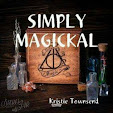HOLISTIC HEALING EAST MIDLANDS
An introduction to some central aspects of alternative healing and holistic medicine
In a world of change, uncertainly and questioning have become the norm. The information age has also contributed to this search for alternatives in all aspects of life, including the field of medicine and healing. Alternative healing medicines and therapies have emerged to challenge orthodox medicines. As technological support and global networking becomes more available, people are becoming more self-empowered and more discerning in the management of their own health.
One of the reasons for the increase in the use of alternative medicine is the failure of conventional medicine to deal with many health issues. Conventional or Allopathic medicine is clearly superb at dealing with trauma and bacterial infections yet it is far less successful at dealing with asthma, chronic pain and autoimmune diseases. A very important reason for the popularity of alternative health techniques is that they are designed not only to treat the symptoms of a particular illness, but also to treat the underlying causes of illness. In other words alternative therapies and medicines attempt to look at the person as a whole and not as a collection of separate body parts. Alternative medicine also takes into account aspects that are usually dealt with separately by conventional methods. For example, the psychological and spiritual aspects are included in a diagnosis.
There are hundreds of different techniques, some very general and others aimed at specific areas of disease and illness, But all alternative techniques have the underlying philosophy that the body is a living whole and that one cannot neglect any areas in diagnosis. The difference between alternative and conventional medicine can be seen in the different approaches to patient consultation. When you consult a practitioner of alternative medicine you will be asked, like a conventional doctor, for a description of any known symptoms. However, the alternative practitioner will ask many more questions relating to lifestyle, diet, personality and family history. Many alternative practitioners will not even examine the patient physically, and if they do they are likely to use methods not encountered in a normal consulting room.
Alternative medicine and healing can be roughly divided into three broad categories
Energy therapies include Acupuncture, Ayurveda, Shiatsu, Tai Chi Chuan, Yoga, Polarity Therapy, and Reflexology,
Physical therapies include Massage, Aromatherapy Massage, Osteopathy, Relaxation Techniques, Kinesiology
Mind and Spirit therapies include Psychoanalytic Therapies, Behavioral and Cognitive Therapies, Humanistic Therapies, Visualization, Dreamwork, Sound Therapy, Music Therapy, Color Therapy and Biorhythms.
Uniformity in Alternative Medicine
Although some alternative therapies share common characteristics, they often differ in their foundational approaches and philosophies as well as in their methods. Some therapies have their source in ancient and traditional medicines that are thousands of years old; others have adapted long established practices by introducing modern elements. There are also some alternative therapies that are modern in origin and make use of ideas not available to practitioner in earlier times. All of this means that we are not dealing with a strict or homogeneous system but with an exciting mixture of different theories and techniques which are still awaiting a synthesis into a truly modern view of alternative medicine.
Why go to an alternative Practitioner?
One of the main reasons for visiting an alternative today is that alternative techniques have become an acceptable path to healing in conjunction with conventional medicine. Techniques and methods used in alternative medicine are often very different from the norm and this has resulted in a certain amount of prejudice and disbelief from society. This prejudice is steadily disappearing as conventional doctors integrate alternative techniques into their healing methods. A good example of this is in Acupuncture where Western medicine has officially incorporated this healing technique and philosophy. Some of the most prestigious Western Institutions-- including Harvard, Yale and Johns Hopkins -- now offer courses in alternative medicine
Another reason is that more and more people are becoming aware of the danger of modern drugs and are looking for alternative methods of healing. Antibiotics, although wonderful lifesavers, are also destroyers. Antibiotics do not discriminate between the good and bad elements in the body and destroy at random. Furthermore, many strains of virus are becoming more and more resistant to these drugs. Visiting an alternative practitioner has become popular because there is a growing realization that the body does not operate separately form the other elements of the human being. It is now well known that psychological stress can affect physical organs and this is taken into account with alternate techniques. For centuries, particularly in the East, it has been realized that there are electro-energetic points in the body known as meridians and that the manipulation through touch and feel or via acupuncture needles can alter the state of health of the patient. This knowledge is gaining credence in even the most orthodox medical circles and more and more doctors are beginning to realize their value.

No comments:
Post a Comment